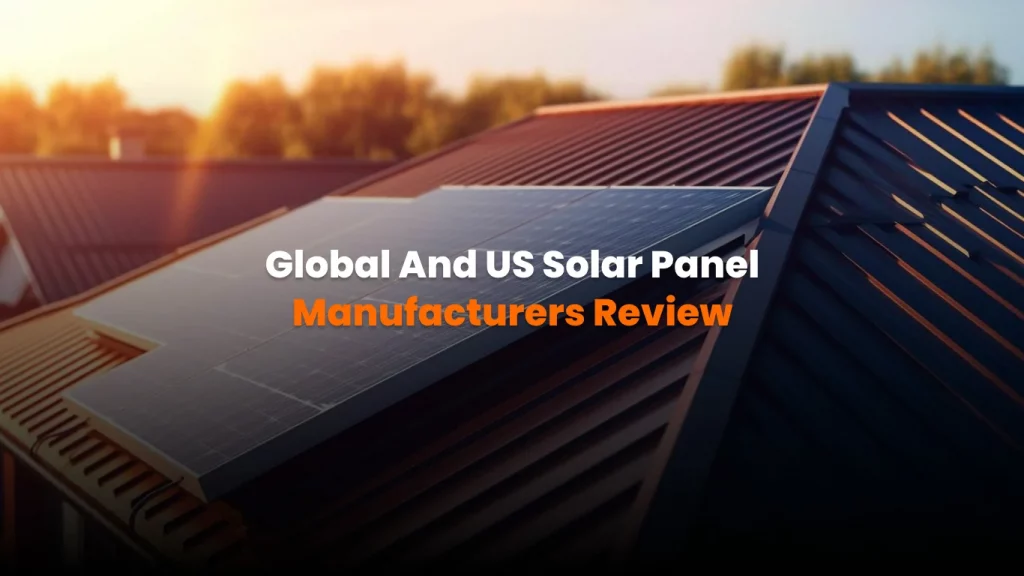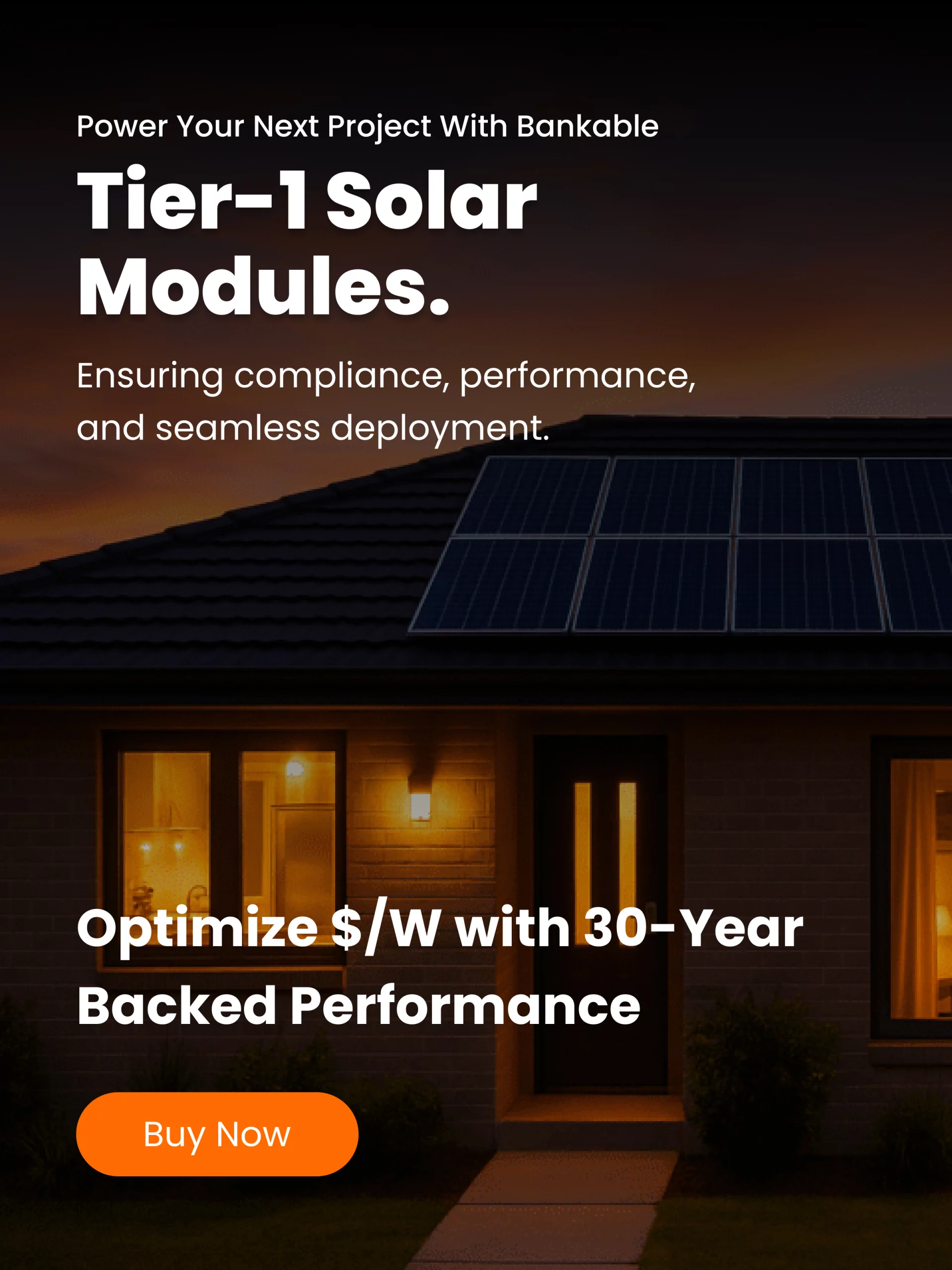As the world races toward a low carbon future, solar panels have become a cornerstone of clean energy strategy. The surge in demand has driven a dynamic manufacturing landscape, with Asian firms dominating global shipments and the United States building its own supply chain. This guide compares leading solar panel manufacturers worldwide, examines the resurgence of US manufacturing, and shows how businesses can source panels wholesale.
Global Leaders in Solar Panel Manufacturers
In recent years, global production of crystalline silicon modules exceeded five hundred gigawatts, nearly doubling the previous year. This growth reflects both the rapid expansion of renewables and fierce competition among manufacturers. A few large companies control most of the supply, many of them headquartered in China or operating large factories across Asia and emerging markets.
Most global leaders are Chinese firms with multi-gigawatt capacity. They maintain cost leadership through economies of scale and integrated supply chains. Yet margins remain tight, and some report financial losses because intense competition pushes prices down.
| Manufacturer | Shipment (GW, H1 2024) | Manufacturing Bases | Notable Features |
|---|---|---|---|
| JinkoSolar | 47.2 | China, Malaysia, Vietnam, United States | Leading global manufacturer with fourteen factories; shipped 210 GW by 2023; more than 57,000 employees; strong profitability |
| JA Solar | 38 | China, worldwide network | Over 50,000 workers; installations cut 37 million tonnes of CO₂ in 2023; serves utility and residential markets |
| Trina Solar | 34 | China, Vietnam, Thailand, United States, Europe | Over 43,000 employees; holds 27+ efficiency records; cut carbon emissions by 62 percent between 2020 and 2022; strong R&D investment |
| Tongwei Solar | 18.7 | China | World’s largest producer of polycrystalline silicon with 450,000 tonne capacity; 58,000 staff; Fortune Global 500 member since 2023 |
| Astronergy (Chint) | 18.7 | China, Thailand, Türkiye, Vietnam | 7,500+ employees; built a 1,000 MW farm in Sichuan powering nearly 300,000 households |
| Canadian Solar | 14.5 | Canada, Brazil, United States, Asia | 20,000+ employees; shipped enough modules in H1 2024 to power 1.3 million Canadian homes; only top-tier manufacturer headquartered outside China |
| GCL | 10 | China | Produces panels and batteries; ultra high output modules up to 720 W; reported financial loss despite shipments |
| DAS Solar | 10 | China, planned expansion in France | Operates 14 factories; planning a 3 GW plant in France; lightweight modules with 20.8 percent efficiency |
The United States Manufacturing Renaissance
The US is experiencing a manufacturing renaissance driven by supportive policy measures and growing demand. Incentives such as the Inflation Reduction Act provide credits for module assembly, cell production and polysilicon manufacturing. Domestic solar module capacity rose 190 percent in 2024 to more than 51 GW and created over 33,000 jobs. Industry data show that 8.6 GW of new module capacity was added in Q1 2025.
Despite this progress, the domestic supply chain remains incomplete. Module assembly is strong, but cell factories are limited and domestic wafer or polysilicon production is scarce. Building a robust supply chain will require investment across upstream segments.
Production is concentrated in a handful of states. Texas and Georgia each host about 8 GW of capacity, while Arizona and Florida each have about 2 GW. Minnesota and Washington each host around 800 MW.
Leading US Manufacturers
| Manufacturer | Annual Capacity (GW) | Technology and Notes |
|---|---|---|
| First Solar | 11 | Cadmium telluride thin film; facilities in Ohio and Alabama; new Louisiana plant; utility-scale focus |
| Qcells | 8.4 | Crystalline silicon modules; Georgia campus; $2.8B investment to build full supply chain |
| Canadian Solar | 5 | Texas factory; integrated across the Americas; exports globally |
| Mission Solar | 1 | Texas facility serving utility and residential markets |
| Silfab Solar | 0.8 | Washington-based plant; premium residential and commercial |
| Heliene | 0.8 | Minnesota facility; North American sourcing; reliability focus |
| Auxin Solar | 0.15 | California facility; serves premium markets; local emphasis |
These companies illustrate the diversity of technologies in the US market. First Solar focuses on thin film, while most others use crystalline silicon. Qcells is pushing vertical integration to mitigate supply chain risks. Canadian Solar demonstrates how an international manufacturer can maintain strong US operations.
Sourcing Solar Panels Wholesale
Businesses needing large volumes of modules can access competitive pricing and professional support through wholesale platforms.
Sunhub Solar Trader Platform
A B2B marketplace covering panels, batteries, inverters and components. Buyers negotiate price, logistics, payment and delivery terms directly with sellers. Minimum order requirements secure inventory, and contracts protect both parties. A Buy Now option offers fixed-price orders with shipping included, suitable for smaller projects. Sunhub also supports sellers with marketing and logistics services.
A1 SolarStore
A wholesale distributor offering modules from global manufacturers with fast delivery. It explains panel differences to guide buyers:
- Monocrystalline: 16–22% efficiency, compact, good for limited space.
- Polycrystalline: 13–17% efficiency, lower cost, good for large sites.
- Thin film: lightweight, flexible, but less efficient and shorter lifespan.
Asian brands such as JA, LONGi and Trina offer affordable, high-output panels but with shorter warranties. US brands like Mission Solar, Canadian Solar and Silfab focus on durability with medium price points. Warehouses on both coasts reduce shipping times and costs.
EnergyBin
A B2B exchange that supports repair, resale and recycling of PV equipment. It enables trading of surplus inventory and components for maintenance or repowering. The platform fosters a sustainable secondary market and connects industry professionals.
Practical Tips for Wholesale Buyers
- Check certification and compliance: Ensure products meet international standards and include certifications.
- Compare warranties and service: Review length of coverage, service support and replacement policies.
- Evaluate logistics and lead times: Select suppliers with strong delivery infrastructure to avoid delays.
- Consider project scale: Match panel type to site requirements — high efficiency for space constrained sites, poly for open land.
- Negotiate terms: Use platforms that allow flexible negotiations to secure favorable pricing and protect margins.
Conclusion
The solar industry is expanding rapidly, with Chinese companies shipping the majority of modules while the US strengthens its domestic base. Global leaders like JinkoSolar, JA Solar and Trina leverage scale to dominate supply, while US firms such as First Solar, Qcells and Canadian Solar grow under supportive policy and rising demand.
Wholesale platforms like Sunhub Solar Trader, A1 SolarStore and EnergyBin provide buyers with tools to secure reliable, cost-effective modules. By understanding manufacturer capabilities, comparing product characteristics and leveraging professional exchanges, businesses can make informed procurement decisions that balance cost, performance and supply chain resilience.
Visit our Sunhub Solar Trader Platform to explore wholesale solar opportunities today.




